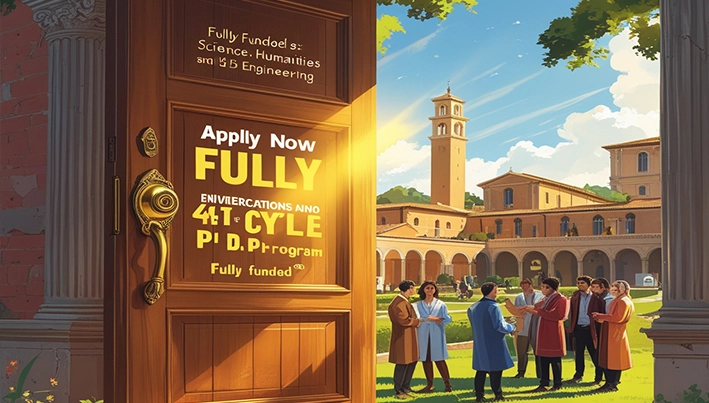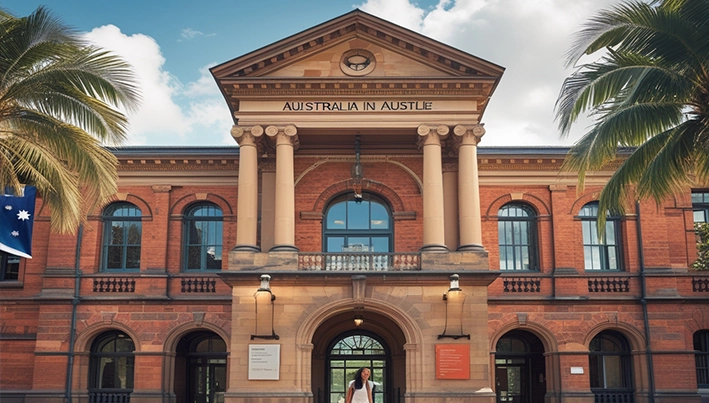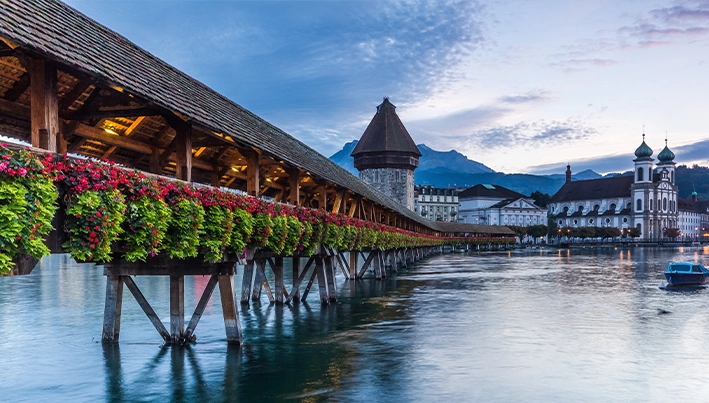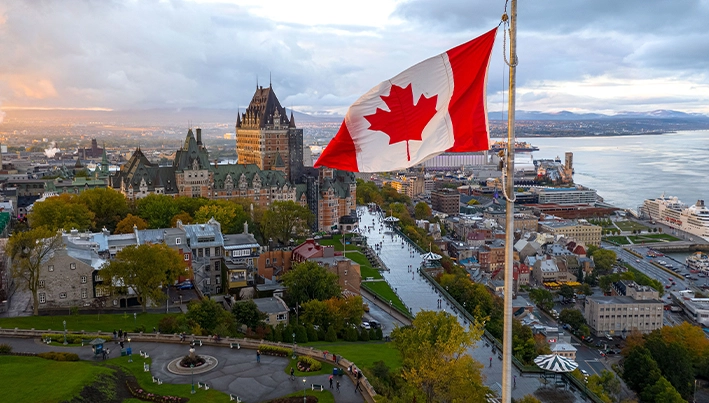The University of Udine in northern Italy is proud to announce the Call for Applications – Ph.D. Programs (۴۱st Cycle), inviting motivated and ambitious scholars from around the globe to pursue advanced research across a range of academic fields. These newly launched doctoral programs present a golden opportunity to live and study in one of Italy’s most charming and culturally rich regions while working under world-class mentors and research facilities.
Italy stands out as a top destination for doctoral education due to its long-standing academic traditions, vibrant research ecosystems, and high quality of life. At Udine, the new cycle promises interdisciplinary exposure, robust financial packages, and a nurturing environment for innovation. This essay explores the University of Udine’s ۴۱st Cycle call, covering program highlights, eligibility criteria, application processes, funding opportunities, benefits of studying in Udine and Italy, and essential tips for prospective candidates.
Founded in ۱۹۷۸, the University of Udine has quickly established itself as a leading Italian public university with a strong research orientation. Located in the Friuli Venezia Giulia region, Udine offers students access to scenic charm, historic architecture, and strong European connections. A member of significant academic networks like UNIMED and EUTOPIA University Alliance, it promotes regional, national, and international collaboration.
The institution offers Ph.D. programs in over ۲۵ fields, including cutting-edge areas such as Environmental Sciences, Biotechnology, Data Science, Healthcare Technologies, Cultural Heritage, and European Law. Faculty members publish in top-tier journals and partner with leading industries and institutions across Italy and Europe. Research centers and labs are equipped with advanced tools, while funding for projects ensures continuous innovation.
Udine’s Ph.D. programs are designed in line with the Bologna Process and European Research Area standards, offering structured training, transferable skills workshops, and interdisciplinary seminars. The curriculum includes public lectures from leading scholars, ethics training, science communication courses, and support for publication and conference participation.

The ۴۱st Cycle includes a rich selection of doctoral tracks:
Biomedical Sciences and Biotechnology – Advanced research into molecular mechanisms, regenerative medicine, and bioinformatics.
Environmental and Agricultural Sciences – Strategic research on sustainability, climate, and agri-tech.
Data Science and Artificial Intelligence – Interdisciplinary work with real-world implications.
Engineering and Robotics – Robotics, IoT systems, and mechanical innovation.
Cultural Heritage and Digital Humanities – Blending traditional arts with digital innovation.
European and International Law – Law with European integration and migration policies.
Economics and Management – Innovation, digital economy, and regional development.
Each doctoral track includes research collaborations with Italian and international universities, industry partners, and public institutions. Successful candidates can engage in Erasmus+ and Horizon Europe-funded projects and build international careers.
A major strength of the University of Udine’s call is the comprehensive funding provided to Ph.D. candidates in the ۴۱st cycle:
Fully-funded Positions: Monthly stipends, tuition waivers, and social security contributions are included.
Special Research Grants: Additional stipends for involvement in high-profile research groups.
Mobility Grants: Funding to support research visits abroad, conference travel, and publication efforts.
Teaching Assistantships: Opportunities to teach undergraduate classes and develop transferable skills.
Post-Doctoral Opportunities: Structured access to post-Ph.D. roles within the department upon excellence.
Most positions are secured via grants from the Italian Ministry of Education and research funds from the University of Udine. Some focus on regional economic development, European research projects, and cooperation with industry.
The requirements for the ۴۱st Cycle call demand academic excellence and research inclination:
Minimum Qualifications:
Master’s degree or equivalent.
Academic distinction and research experience.
Language proficiency: B۲ or C۱ level (English or Italian). Many programs now teach in English and accept English-taught degrees.
Documents Required:
Application form.
Curriculum vitae and publication list.
Two academic recommendation letters.
Research proposal (۲–۴ pages).
Degree certificates and transcripts.
Language test results (If applicable).
Mathematics/Engineering track: May require GRE or similar certification.
Humanities track: Writing samples or publication records are encouraged.
Shortlisted candidates will interview with a commission in English or Italian. Results are publicly posted, and admitted candidates will follow enrollment and residence permit procedures.
Academic Prestige
Italian universities are steeped in centuries of scholarship and research. The University of Udine stands apart for its commitment to applied research in science, engineering, and regional studies.
Interdisciplinary Collaboration
Udine’s programs promote joint research across disciplines, bridging departments and tapping into broader national and EU initiatives.
Cost-effective Living
Udine offers lower costs of living compared to other European study destinations, making the fully funded packages even more valuable.
Cultural Wealth
Living in Udine provides a gateway to Italy’s cultural tapestry—historic towns, regional festivals, cuisine, and European travel opportunities.
Geographic Advantage
The region sits near Austria and Slovenia, offering ease of travel. Its well-connected train network makes it ideal for H۲۰۲۰/Erasmus+ collaborations.
Support Services
Udine supports international students with language courses, visa guidance, cultural integration events, and health coverage.
To succeed in the application process for the ۴۱st cycle:
Start Early – Note deadlines, prepare transcripts and research samples.
Identify Supervisors – Contact potential advisors with a tailored abstract of your research aims.
Highlight Achievements – CV should emphasize academic and research outputs.
Draft a Clear Proposal – Define motivation, objectives, methodology, and potential impact.
Polish Your Language Skills – Aim to achieve the required level in Italian or English.
Secure Good References – Letters should reflect your research potential.
Prepare for the Interview – Expect questions on methodology and academic motivation.
Affordable and Comfortable Living
The cost of living in Udine is lower than in metropolitan cities. Dormitories or shared flats are common and cost-effective. Monthly living costs (food, transport, services) range between €۷۰۰–€۹۰۰.
Cultural Immersion
Udine blends Medieval charm with local festivals like “Friuli DOC” (wine/cuisine), “PatatOdine” (street art), and “UDINEmovies.” Traditional market life, crafts, and regional cuisine invited personal growth.
Active International Community
Student groups host welcome events, language tandems, and cultural trips to Venice, Trieste, Venice Lido, and Slovenia. The International Office assists with bureaucratic and integration matters.
Graduates from the ۴۱st cycle can expect strong career outcomes:
Academia: Positions in Italy, EU, or beyond.
Industry: Engagement in biotech, data, robotics, engineering.
Public Sector: Roles in policymaking, cultural heritage management, environmental agencies.
Entrepreneurship: University-linked incubators and start-up initiatives.
A Ph.D. from Udine brings an EU-level research profile, making candidates competitive for European grants (Marie Curie, ERC).
The ۴۱st Cycle call typically opens in May and closes in June or early July. Exact dates are detailed in the official public notice. Interviews occur in July, with results released in August, and enrollment in the fall semester (September–October).
The University’s Ph.D. Office and Doctoral School publish timelines, guidelines, FAQs, and administrative details on their dedicated website. The International Office is available for visa and relocation support.
The “Call for Applications – Ph.D. Programs (۴۱st Cycle) at the University of Udine, Italy” presents a unique opportunity to join a thriving academic community within a region known for cultural richness, geographical advantages, and innovation. With full funding, interdisciplinary research options, and a supportive study environment, the Ph.D. call offers more than a degree—it offers a springboard to a global academic or professional career.
If you’re a motivated researcher seeking a fully funded doctoral journey—whether in engineering, humanities, science, or law—the University of Udine’s ۴۱st cycle is an ideal fit. Embrace academic excellence while experiencing life in Italy. Your research, voice, and future belong here.
now, and launch your doctoral journey in Udine—where scholarship, culture, and innovation converge.

Education, culture, and entertainment are three deeply interconnected pillars that shape the identity of a nation. In the case of Italy, a country with a legacy of classical learning, artistic brilliance, and global cultural influence, these elements are not only historical cornerstones but also modern instruments of development and soft power. From ancient universities to cinematic revolutions, and from Renaissance masterpieces to contemporary music, the Italian spirit continues to thrive in classrooms, theaters, museums, and festivals.
This essay explores how the education system has impacted societal progress, how culture remains a vibrant force, and how entertainment unites tradition with modernity in the everyday life of Italians.
The roots of formal education in this Mediterranean nation date back centuries. Institutions such as the University of Bologna, founded in ۱۰۸۸, and the University of Padua, established in ۱۲۲۲, are among the oldest in the world. These historic centers of learning laid the groundwork for a tradition that continues to play a crucial role in the development of modern Italy.
The Italian education system is divided into several levels: preschool, primary school, lower secondary school, upper secondary school, and university. Education is compulsory from ages ۶ to ۱۶ and is predominantly public, with private institutions functioning under government regulations. Over the years, national reforms have focused on inclusivity, technology integration, and curriculum modernization.
University education in Italy offers a wide range of programs in both Italian and English, attracting international students and scholars. With institutions such as La Sapienza University of Rome and Politecnico di Milano, the country continues to produce professionals in fields like engineering, art restoration, medicine, design, and architecture.
Education has played a key role in reducing regional disparities, especially between the industrialized north and the traditionally agricultural south. Literacy rates have increased, gender gaps have narrowed, and digital education initiatives have gained momentum, particularly after the COVID-۱۹ pandemic. Moreover, research and innovation funding, supported by the European Union, has helped Italian universities collaborate on international projects, leading to academic recognition and economic growth.
While the system still faces challenges such as bureaucratic delays and underfunded schools in remote areas, reforms continue to aim for greater autonomy, merit-based hiring, and global partnerships. Education in Italy is not just a right; it is a vehicle for cultural preservation and national cohesion.
Italy is synonymous with culture. From the ancient ruins of Pompeii and the Colosseum to the Gothic beauty of Milan Cathedral and the baroque extravagance of Roman churches, the country is home to more UNESCO World Heritage Sites than any other. It is often referred to as the cradle of Western civilization and the birthplace of the Renaissance.
Art is everywhere. Cities like Florence, Venice, and Rome are open-air museums. Masterpieces by Leonardo da Vinci, Michelangelo, Raphael, and Caravaggio adorn churches, galleries, and public spaces. These works are not mere decorations; they are embedded in national consciousness and daily identity.
Cultural education starts early. Schools introduce students to art history, literature, and classical languages like Latin. This fosters a deep respect for the past and a curiosity about its relevance in the present. Youth are often involved in local heritage preservation activities and community-based artistic events, ensuring continuity in tradition.
Literature, too, remains an important cultural force. From Dante Alighieri’s “Divine Comedy” to Elena Ferrante’s modern Neapolitan novels, the written word continues to shape societal narratives and global perceptions of Italian life.
Furthermore, regional traditions — whether Sicilian puppet theater, Neapolitan music, or Sardinian folk dances — are carefully maintained through festivals, education, and oral transmission. Cultural institutions such as the Accademia della Crusca and the Italian Institute of Culture work globally to promote language and heritage, cementing Italy’s position as a cultural superpower.
Entertainment in Italy is diverse, dynamic, and deeply ingrained in everyday life. It mirrors the country’s ability to balance timeless customs with modern innovation.
Italian cinema has had a profound impact worldwide. The post-war era brought neorealism to the global stage, with directors like Roberto Rossellini, Vittorio De Sica, and Luchino Visconti shedding light on poverty, humanism, and resilience. Films like “Bicycle Thieves” and “La Strada” became international symbols of artistic storytelling.
In the ۱۹۶۰s and ۷۰s, auteurs such as Federico Fellini and Michelangelo Antonioni redefined cinema with surrealism and psychological complexity. Today, directors like Paolo Sorrentino and Matteo Garrone continue to win accolades at international film festivals, blending local themes with universal appeal.
Film festivals such as the Venice International Film Festival — the oldest in the world — remain key events in global entertainment. They not only showcase talent but also foster discourse on politics, society, and aesthetics.
Television continues to be a dominant form of entertainment. Popular reality shows, talk shows, news programs, and dramas reach millions of viewers every evening. In recent years, streaming services have begun to offer original content rooted in local history, such as Mafia series or family sagas, which are gaining popularity both at home and abroad.
Italian music television programs and national song contests, like the Sanremo Music Festival, have launched generations of pop stars and contributed to the creation of Eurovision standards.
Music, particularly classical and opera, is integral to cultural life. Composers like Giuseppe Verdi and Giacomo Puccini remain revered. Opera houses such as Teatro alla Scala in Milan are iconic spaces where tradition continues to thrive.
In parallel, modern genres including rock, pop, jazz, and electronic music have carved out a significant place. Italian pop music, especially during summer festivals, brings together young crowds, combining modern beats with nostalgic lyrics. Cities regularly host outdoor concerts in historical squares, uniting the old and new in a way only Italy can.
Traditional dances like the tarantella and pizzica are performed at local events, especially in southern regions, keeping folklore alive through rhythm and communal joy.
Entertainment in Italy extends beyond the stage and screen to the runway. Fashion is a form of cultural expression, and cities like Milan and Florence are global centers of design. From haute couture to streetwear, Italian designers blend craftsmanship with artistic daring, influencing style trends across the world.
Fashion shows are not just commercial events—they’re spectacles. They merge performance art with cultural commentary, often held in historic venues that amplify their visual power.
Festivals in Italy are a celebration of culture, religion, and community. Whether religious processions during Easter, Carnival parades in Venice, or secular festivals dedicated to wine, food, or cinema, these gatherings are a vital aspect of national identity.
Events such as Il Palio di Siena, a historic horse race, or the Battle of the Oranges in Ivrea, attract thousands of locals and tourists each year. Each festival tells a story, often rooted in centuries-old customs that still resonate today.
In smaller towns, celebrations of patron saints bring communities together with fireworks, music, and shared meals. Such moments of joy, reflection, and social bonding are part of the entertainment that defines Italian life.
What sets this country apart is the seamless fusion of education, culture, and entertainment. Schools organize trips to museums and theaters, students participate in music competitions, and teachers incorporate cinema and poetry into their lessons. This holistic approach produces well-rounded citizens with critical thinking skills, cultural empathy, and artistic appreciation.
Government initiatives such as “۱۸app,” a cultural bonus for teenagers turning ۱۸, provide funds for books, theater tickets, concerts, and exhibitions, encouraging young people to immerse themselves in national culture.
Moreover, local governments support artist residencies, theater groups, and music schools, particularly in underdeveloped areas, ensuring that art and education reach all corners of society.
Italy’s impact is not confined to its borders. Through its embassies, cultural institutes, and international collaborations, the country promotes language, art, and academic exchange globally. Italian cuisine, cinema, design, and fashion are celebrated worldwide, while joint university programs foster intellectual diplomacy.
The nation uses its cultural strength to forge relationships, influence policy, and maintain visibility on the world stage. Its entertainment exports and educational partnerships contribute to both economic growth and international goodwill.
Education, culture, and entertainment are not separate aspects of life in this beautiful country; they are tightly interwoven, reinforcing one another in a continuous cycle of learning, expression, and celebration. From its universities to its opera houses, from its art galleries to its television studios, every space serves as a platform for creativity and community.
Italy’s enduring legacy in these fields is not just a reflection of the past, but a vision for the future. As it continues to educate its youth, preserve its cultural treasures, and innovate in entertainment, it ensures that the Italian spirit remains vibrant and influential for generations to come.

In a rapidly globalizing world, studying abroad has become more than a trend—it’s a transformative opportunity. International students today are no longer just seeking degrees; they’re looking for experiences that blend education, culture, and personal growth. Among the many study destinations around the world, Italy has emerged as a top choice for global learners due to its exceptional academic heritage, vibrant culture, and welcoming environment.
Italy is home to some of the world’s oldest and most respected universities, such as the University of Bologna, which dates back to the ۱۱th century. Institutions across the country offer a wide range of programs in English and Italian, covering fields like engineering, humanities, art, fashion, and business. This flexibility allows students to tailor their academic paths while enjoying an immersive international experience.
One of the strongest appeals of studying in Italy is its fusion of learning and lifestyle. Students not only attend top-tier lectures but also live in cities steeped in history, from Florence’s Renaissance art to Rome’s ancient ruins. This unique academic environment fosters creativity, critical thinking, and a deeper appreciation for global culture.
Italy also offers excellent opportunities for scholarship and financial support. The government, regions, and universities provide scholarships for both EU and non-EU students based on merit or financial need. As a result, higher education becomes accessible to a wider group of aspiring scholars from around the globe.
The student lifestyle in Italy is enriching and community-oriented. Campuses host international clubs, mentorship programs, and cultural exchanges that help students form connections and ease into their new environment. Whether you’re sipping espresso in a Roman piazza or exploring Venetian canals, daily life here is both charming and educational.
Italy’s central location in Europe offers another advantage: travel. With easy access to countries like France, Germany, and Switzerland, students studying in Italy can explore diverse cultures and languages during breaks, expanding their worldviews and making memories that last a lifetime.
For students interested in language learning, Italy presents an ideal setting. While many programs are in English, learning Italian opens doors to deeper cultural understanding and more job opportunities within the country. Language centers, tandem exchange programs, and immersive daily conversations help international students pick up the language quickly.
After graduation, many students choose to stay in Italy for internships or employment, especially in industries like design, fashion, tourism, and technology. The Italian government has improved post-study visa pathways, making it easier for graduates to begin their careers without leaving the country immediately.
In summary, studying abroad in Italy is more than an academic venture—it’s a gateway to cultural discovery, career development, and lifelong growth. With its balance of tradition and innovation, affordability and excellence, Italy remains a shining destination for international students ready to embrace the world.
For those seeking a truly global education in a place where history meets opportunity, Italy offers the perfect beginning.











Leave a Reply